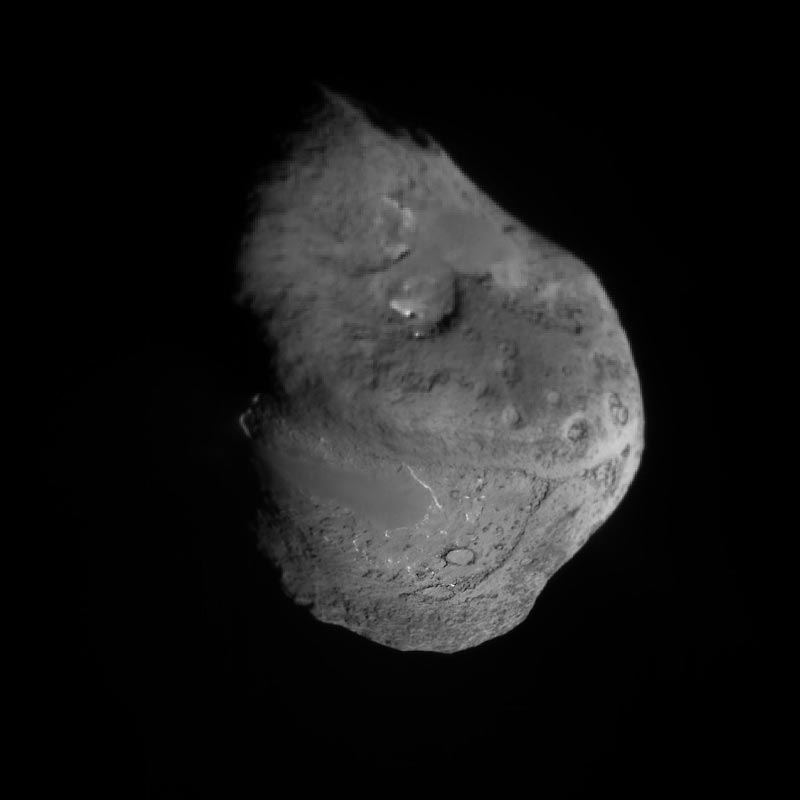
But the next year, astronomers found a second object in a similar orbit, then another, and another. Instead of a planet, they had found the first of the asteroids — large chunks of rock that were left over from the formation of the solar system. Ceres is the largest, with a diameter of almost 600 miles (1,000 km).
Astronomers have discovered hundreds of thousands of these boulders, and with automated searches they are discovering thousands more each year. Most orbit the Sun in a broad region known as the asteroid belt, which is between the orbits of Mars and Jupiter.
For a long time, astronomers thought that Ceres and the other asteroids were the remnants of a planet that exploded. But today, most believe that the asteroids were prevented from coming together to form a planet by the gravity of nearby Jupiter, which nudged them on each orbit around the Sun.
Asteroids are made of rock and metal. In the largest ones, the decay of radioactive elements heated their interiors, causing their material to "differentiate." In other words, gravity pulled the heavier materials, like iron and nickle, to the centers of these asteroids, while lighter rocks "floated" to the surface, creating a structure that is similar to Earth and the other inner planets.
In many science-fiction movies, the asteroid belt is like a cosmic obstacle course, but the truth is far less dramatic: The asteroids are so widely separated that it's easy for a spacecraft to maneuver through the belt without even seeing an asteroid, much less running into one.
Even so, over the life of the solar system, asteroids in the belt have undergone countless collisions, shattering many of them and sending fragments flying throughout the solar system. Collisions and near-collisions also have deflected asteroids from their orbits and sent them spiraling into the inner solar system.
About 25,000 of these bodies form a class known as Near-Earth Asteroids because their orbits cross or come close to Earth's orbit around the Sun. As many as 1,000 of them may be at least one kilometer in diameter. If such an asteroid hit Earth, it could wipe out a city and affect climate around the globe. Asteroids a few times that size could devastate the entire planet.
In fact, there is evidence of several powerful collisions with Earth in the distant past. The most famous occurred 66 million years ago, when an asteroid several miles in diameter hit near present-day Yucatan. The resulting explosion and shock wave, acid rain, and Sun-blocking clouds may have led to the extinction of most species of life on Earth, including the dinosaurs. An even bigger impact 250 million years ago may have produced the largest mass extinction ever recorded.
Despite the threat, asteroids also present opportunities.
Because they are left over from the formation of the solar system, they hold clues to the composition of the cloud of material that gave birth to Earth and the other planets. And because they are rich in metals — and perhaps water — they could provide resources for the exploration and colonization of the solar system.
Exploring these tiny worlds is not easy, though. Their surface gravity is a tiny fraction of Earth's. With such a weak pull, it requires fairly little energy to escape an asteroid and soar into space; a good fastball would do the trick. Since an astronaut would weigh less on the surface of an asteroid than a baseball does on Earth, every step would send the explorer sailing far above the surface. Astronauts might use small rocketpacks to simply float above the surface of one of these leftover boulders.
Last update: June 2, 2021